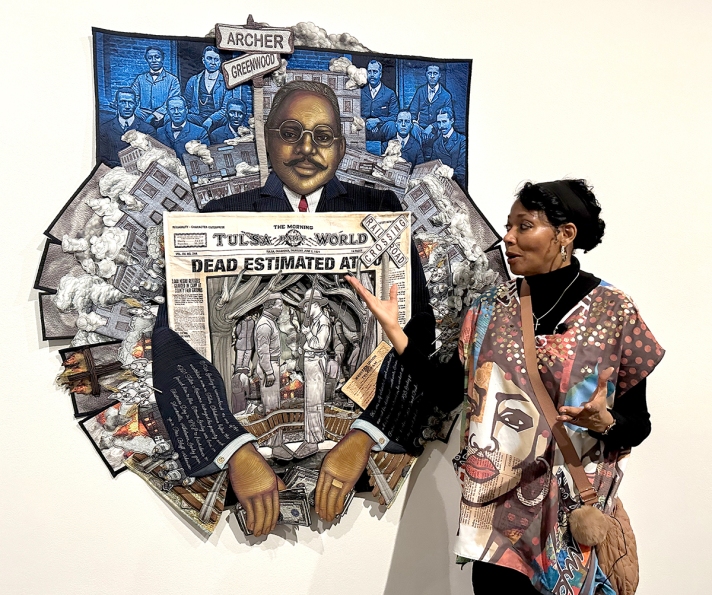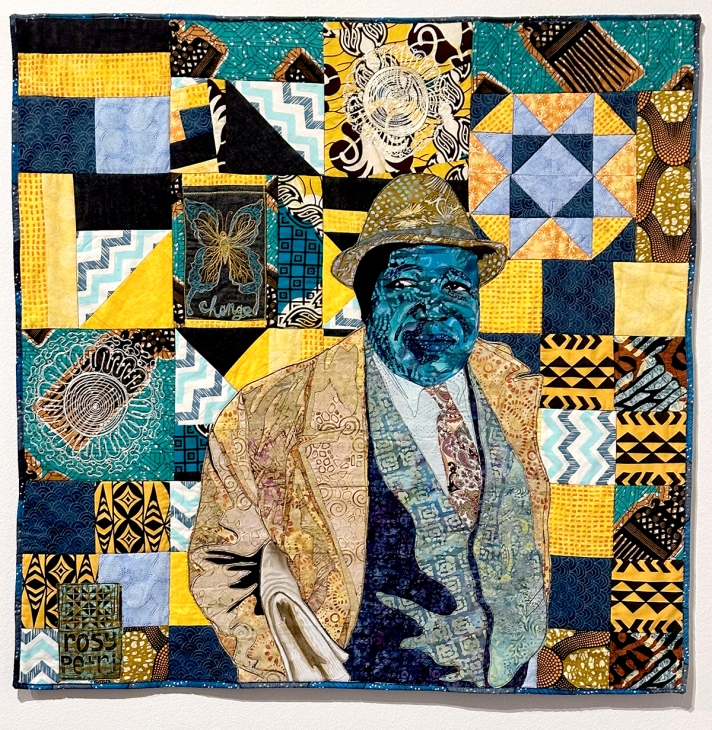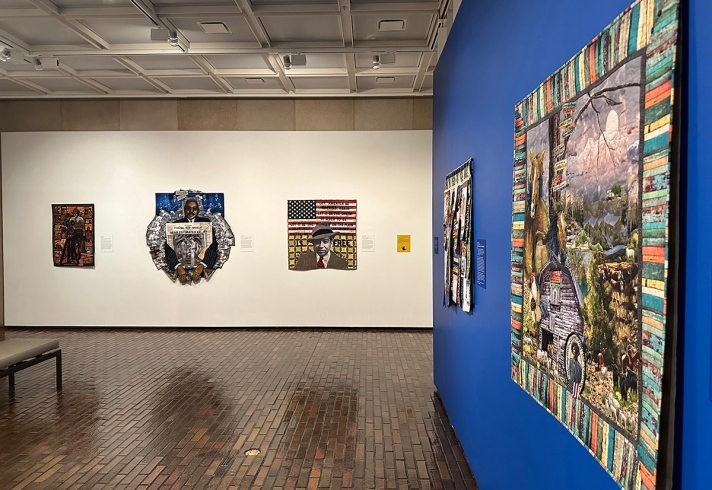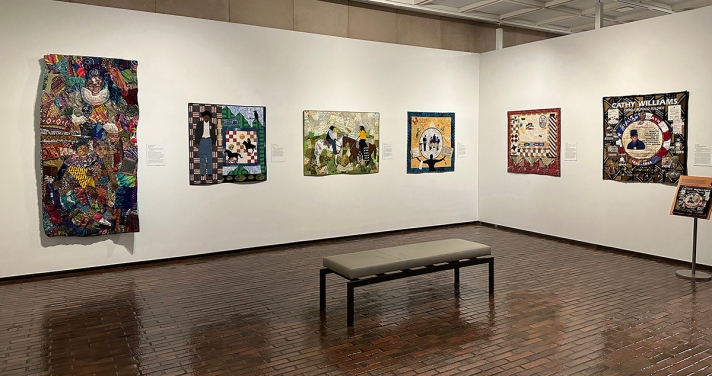
There is a strong tradition of quilting among Black women. It is a way to embrace history and family, and a way for women to bond. The powerful symbolism of the quilt as a cultural artifact is found in Alice Walker’s short story, “Everyday Use,” where Maggie continues the family tradition and takes her place in the lineage of keepers of family history.
“Black Pioneers: Legacy in the American West,” on display at the Stark Museum of Art through Aug. 3, continues the quilting tradition but with a modern twist. Created especially for the exhibition by the Women of Color Quilters Network, the quilts represent important African-American figures from history.
Rather than simply compiled from discarded scraps or old clothes, many of the quilts use decidedly modern techniques and materials, including photo reproductions and paintings.
Carolyn Crump is a fifth-generation quilter and artist. At a reception previewing the show, she said she builds her work layer by layer. It might be one image, she said, but it could be made of 500 small quilts to make the one large quilt.
Houston-based Crump’s “The Truth Hurts: Riches, Resentment, Revenge, RIOTS,” from 2021, examines the impact of the 1921 Tulsa Race Massacre where the affluent “Black Wall Street” area of the city was destroyed by white attackers. Historians now think as many as 300 people may have been killed, as 35 city blocks were burned.
Crump’s three-dimensional quilt depicts the violence. The central figure is a well-dressed Black man holding thousand-dollar bills. He is the representation of the affluence the white vigilantes were so threatened by. A newspaper announces the dead, but the actual number is obscured by a railroad sign. A train track snakes its way through the design symbolizing the two sides of the track that divide the city. The image literally breaks free from the wall. As we are forced to confront the reality of history, we surely wonder how far we have come and yet how tenuous are the advances made.

The contemporary quilts feature a variety of styles. “Watts Riot,” by Viola Burley Leak, is a vibrant, colorful piece with a pop art vibe which connects with the 1965 riots. Burley Leak composed the work as a paper collage prior to making the quilt. The five parts tell the story from the initial incident and police brutality that incited the riots. The rioters cry was “Burn, Baby, Burn,” and each panel features a figure lighting a fire. It is a viscerally exciting image.
The quilts do not all feature traumatic moments in African-American history. In fact, the exhibition, as its name suggest, is a celebration of “Black Pioneers” and their contributions to American history.

A more traditional quilt celebrates the life of Clara Brown. She was born free in 1803 but after marrying and having four children, she and her family were separated and sold into slavery when she was 36. After being freed in 1856, she spent the rest of her life searching for her children, while also serving Colorado Gov. Frederick Walker Pitkin to help destitute people, dubbed “Exodusters,” relocate to Colorado. Brown finally reunited with her daughter in 1882, when her daughter was 56. Sandra Lee Chandler’s predominantly denim quilt is composed of squares and geometric flower shapes.

Rosy Petri’s “A Good Soldier: Thomas C. Fleming, America’s Longest Serving Black Journalist,” incorporates traditional patterns with a modern twist on the figure. Fleming’s blue face draws on the non-traditional Expressionist use of color. His clothes almost melt into the background. One feels that his career spans the history of the Black experience.

“The Spelling Words,” by Gwendolyn Aqui-Brooks, depicts Elizabeth Thorn Scott Flood, a California activist and educator who operated a private school for African Americans in 1854. The large work is a whirling composite of brightly-colored fabric. The teacher and two students seem to be hiding inside the overwhelming color. Another example of hidden historical figures.
There are 50 works in the exhibition and each piece is accompanied by a detailed description of the figures and event depicted.
The Women of Color Quilters Network is a non-profit organization founded in 1985 to promote and preserve the art of quiltmaking.
“Black Pioneers: Legacy in the American West” is both an art exhibition and a history lesson. It is well worth a visit.
The Stark Museum of Art is located at 712 Green Ave. in Orange, Texas. For more, visit starkmuseum.org.
This story first ran in the March 10, 2024, Art of Living section of The Beaumont Enterprise.


